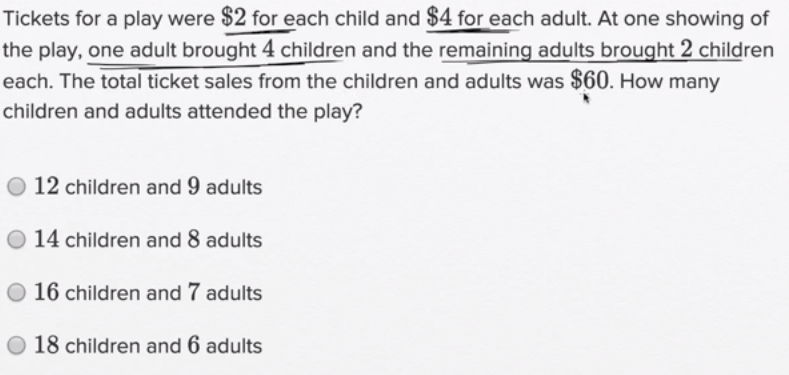The wildly popular online video education nonprofit, Khan Academy, inked a rare exclusive deal last year with the makers of the SAT to provide official test prep for the college-bound masses. Recently, Khan Academy’s test prep system and the new questions were released the public.

*The Ferenstein Wire is a syndicated news service. For inquiries, contact information for the editor is here.
The new SAT has been overhauled to emphasize 21st century skills, including statistical and scientific literacy. I’ve posted some “difficult” science and statistics questions below, so readers can see how they would fare, if they were taking the SAT.
(Note: questions are screenshots from Khan Academy videos and answers to each question are contained in the links to the Khan Academy videos under each header below).
Statistics and Confidence Intervals

This question asks students if they understand confidence intervals, or how the predicted average of a population might change as we sample again and again.
Proportions and Sampling

More sampling! This question is a “basic” question on being able to quickly estimate how samples scale to a larger populations.
Unit Conversion

Americans love the imperial number system, but the rest of the world is on the metric system. In a globalized economy, this question assumes that students will need to know how to convert between the two.
Family Word Problems

This question asks about a basic system of linear equations related to family finance.
Even though the SAT has been redesigned, no one knows whether it will help prepare students for the 21st century. Standardized test scores have historically been a very poor indicator of college and career readiness. So, know one really knows how changing the test (or improving scores) will translate into any meaningful economic outcomes.
At the very least, Khan Academy’s new test prep platform will collect lots of data on how students improve over time, and this data could help education researchers make meaningful changes to the K-12 system.
For more stories, subscribe to the Ferenstein Wire newsletter here.
